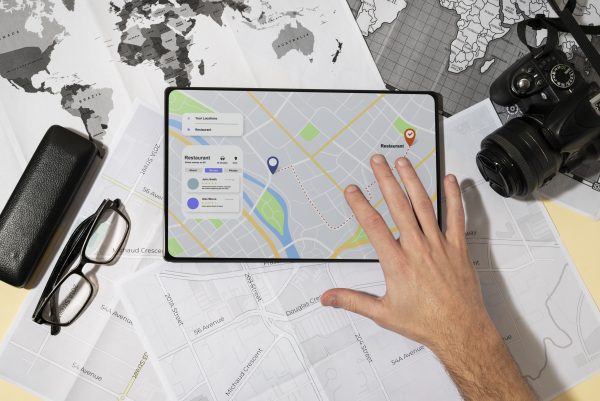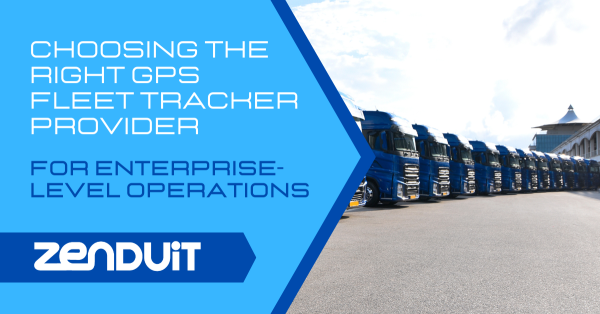Asset theft has escalated to a concerning level in recent years, impacting both individuals and businesses globally. This trend is not just alarming due to the financial losses incurred, but also because it undermines a sense of security and trust in our communities and markets.
In 2020, asset misappropriation was the most common scheme used by perpetrators to defraud their employers, accounting for 86% of the cases examined globally. This suggests a widespread issue of asset theft in the corporate world. From high-value goods like vehicles and electronics to personal belongings of sentimental value, no asset seems immune to the risk of theft. This growing problem necessitates innovative and effective measures for protection and recovery.
Advanced tracking solutions have emerged as a potent weapon in the battle against asset theft. These technologies, evolving rapidly in sophistication and accessibility, offer a proactive approach to safeguarding valuables. By leveraging tools such as GPS trackers, RFID tags, and IoT-enabled devices, asset owners can now monitor their belongings with unprecedented precision and ease. These systems not only aid in the real-time tracking of assets but also significantly boost the chances of recovery in the event of theft.
This introduction to advanced tracking solutions will explore their role in deterring theft and recovering stolen assets. We’ll explore how these technologies function, their benefits, and the peace of mind they offer to those looking to protect what’s theirs. As we navigate through this guide, we will uncover the layers of security these solutions provide, and how they are reshaping the landscape of asset protection in our increasingly digital world.
Understanding Asset Theft
Asset theft, in its broadest sense, encompasses the unauthorized taking or appropriation of personal or business assets without consent. These assets can range from tangible items like vehicles, electronics, and machinery, to intangible assets like data and intellectual property. The impact of such thefts can be far-reaching, affecting not only the immediate financial value of the stolen items but also causing operational disruptions, loss of personal data, and eroding the sense of security.

Recent Statistics and Trends in Asset Theft:
- Rising Incidence: The incidence of asset theft has surged in recent years, a trend partly driven by technological advancements that enhance the value and marketability of certain assets. For instance, the retail sector alone has witnessed over $112 billion in losses due to theft, reflecting an unprecedented level of crime in this area.
- High-Value Targets: High-value assets, including luxury vehicles, advanced electronics, and specialized machinery, are increasingly targeted by thieves. The global magnitude of this problem is underlined by the staggering annual loss of over $4.7 trillion due to fraud by employees, suggesting that no asset class is immune to theft.
- Cyber-Related Thefts: With assets becoming more digitized, cyber-related thefts have escalated. These thefts involve not just tangible assets but also data and digital resources. This shift towards digital assets underscores the evolving nature of asset theft in a digital economy.
- Global Challenge: Asset theft continues to pose a significant challenge worldwide, influenced by regional economic and security factors. In the U.S. alone, businesses lose approximately $50 billion each year to employee theft, including theft of cash, assets, and sensitive data. This highlights the global and multifaceted nature of the asset theft problem.
Common Methods Used by Thieves to Steal Assets:
- Physical Theft: This is the traditional method where thieves physically take possession of an item, often involving break-ins, pickpocketing, or hijacking vehicles.
- Cyber Theft: Hackers and cybercriminals employ sophisticated methods to steal digital assets, including phishing, hacking into networks, and deploying malware.
- Internal Theft: Sometimes, asset theft occurs from within an organization, with employees or insiders’ misappropriation of assets.
- Fraud and Deception: Thieves often use deception, such as identity theft or fraud, to unlawfully acquire assets.
The Evolution of Tracking Technologies
The journey of tracking technologies is a fascinating tale of innovation and adaptation, mirroring the evolving challenges in asset protection. From rudimentary methods to sophisticated digital systems, the evolution of these technologies reflects a constant pursuit of more effective ways to secure and monitor assets.
1. Early Beginnings:
- Manual Tracking: In its earliest form, tracking involved manual methods, like maintaining detailed logs and physical checks. This was time-consuming and prone to human error.
- Basic Electronic Systems: The advent of electronics brought about simple electronic tracking systems, which offered a more reliable way to monitor assets but were limited in range and functionality.
2. The Digital Revolution:
- GPS Technology: The introduction of GPS (Global Positioning System) marked a significant leap forward. It allowed for real-time tracking of assets anywhere on the globe, revolutionizing how businesses and individuals monitored their valuables.
- RFID Tags: Radio-Frequency Identification (RFID) technology provided a way to track assets over short distances without direct line-of-sight, ideal for inventory management and controlling access to secured areas.
3. The Rise of IoT and Smart Devices:
- Internet of Things (IoT): With IoT, assets could be equipped with smart devices that not only track location but also monitor conditions like temperature, movement, and even unauthorized access attempts.
- Integration with Big Data and AI: Modern tracking solutions now integrate with big data analytics and artificial intelligence, offering predictive insights and proactive security measures against theft.
4. Mobile and Cloud-Based Solutions:
- Accessibility: The proliferation of smartphones and cloud computing has made tracking technologies more accessible and user-friendly. Users can now monitor their assets remotely, receive instant alerts, and access historical data seamlessly.
- Customized Applications: Custom apps and software solutions have been developed for specific needs, from tracking fleet vehicles in real-time to securing sensitive data in transit.
This progression from basic to advanced tracking solutions reflects a response to the growing sophistication of asset theft methods. As thieves have become more technologically adept, so too have the means to thwart their attempts. In the next sections, we will explore the types of advanced tracking solutions available today, and how they are being applied to protect assets from theft effectively.
Types of Advanced Tracking Solutions
In response to the escalating challenges of asset theft, a variety of advanced tracking solutions have been developed. These technologies cater to different needs and scenarios, offering flexibility and effectiveness in asset protection.
1. GPS Tracking Systems:
- Functionality: GPS tracking systems utilize satellite technology to provide precise location data of an asset in real-time.
- Applications: Widely used for vehicles, fleet management, and personal assets like phones and laptops.
- Features: These systems often include geofencing capabilities, movement alerts, and detailed travel history logs.
2. RFID (Radio-Frequency Identification) Solutions:
- How They Work: RFID technology uses electromagnetic fields to automatically identify and track tags attached to objects.
- Use Case Examples: Commonly employed in inventory management, retail security, and access control systems.
- Advantages: RFID solutions excel in environments where assets need to be tracked over short distances, offering quick scanning of multiple items simultaneously.
3. IoT (Internet of Things) and Smart Tracking Devices:
- Smart Integration: IoT devices are embedded with sensors and network connectivity, allowing them to collect and exchange data.
- Versatility: These devices can monitor various parameters like location, temperature, movement, and even tampering.
- Real-Time Monitoring: IoT solutions are ideal for dynamic environments, providing real-time alerts and updates on asset status.
4. Mobile Tracking Apps and Software:
- Accessibility: Mobile apps bring tracking capabilities to smartphones, making it easier to monitor assets on the go.
- Customization: Many apps offer customized features, like setting alert preferences and viewing detailed asset reports.
- User-Friendly Interface: Designed for everyday use, these apps simplify asset tracking for individuals and small businesses.
Each of these advanced tracking solutions has its unique strengths, making them suitable for various applications. For example, GPS systems are invaluable for tracking assets over long distances, while RFID excels in close-range, high-volume environments. IoT devices offer comprehensive monitoring by gathering diverse data, and mobile apps provide convenience and ease of use for personal asset tracking.
The choice of technology depends on the specific needs and circumstances of the asset owner, whether it be for personal security or business asset management.

Benefits of Using Advanced Tracking Solutions
Advanced tracking solutions offer a multitude of benefits that extend beyond mere location tracking. These innovative technologies play a crucial role in enhancing security, improving recovery rates, deterring theft, and providing peace of mind to asset owners.
1. Real-Time Monitoring and Location Tracking:
- Instant Updates: One of the primary advantages of advanced tracking systems is the ability to monitor the location of assets in real-time. This feature is crucial for timely responses in case of unauthorized movement or theft.
- Historical Data: Beyond current location, these systems often provide historical location data, which can be invaluable in understanding the movement patterns of assets and identifying vulnerabilities.
2. Improved Recovery Rates of Stolen Assets:
- Quick Response: With immediate alerts and precise location information, the chances of recovering stolen assets increase significantly. This quick response capability is particularly important for high-value or sensitive assets.
- Law Enforcement Collaboration: Real-time data from tracking systems can be shared with law enforcement agencies, aiding in the rapid recovery of stolen goods.
3. Deterrence Effect on Potential Thieves:
- Visible Security Measure: The presence of tracking devices can act as a deterrent to thieves. Knowing that an asset is monitored and can be easily traced often discourages theft attempts.
- Advanced Alerts: Some systems include proactive alerts that notify owners of any suspicious activity, such as an asset being moved out of a predefined area (geofencing), which further deters theft.
4. Peace of Mind for Asset Owners:
- Security Assurance: Knowing that assets are continuously monitored offers a sense of security and peace of mind to owners, especially for those who manage valuable or critical assets.
- Control and Management: For businesses, these tracking solutions provide a means to efficiently manage and control assets, ensuring that they are used appropriately and are always accounted for.
Implementing Tracking Solutions for Different Assets
The versatility of advanced tracking solutions allows for their implementation across a wide range of asset types. Whether it’s protecting vehicles, safeguarding electronics, or securing valuable goods, customized tracking solutions can be tailored to suit specific needs and asset characteristics.
Customizing Tracking Solutions for Various Assets:
- Vehicles:
-
-
- GPS Vehicle Tracking: Businesses and individuals alike use GPS tracking systems to monitor the real-time location of vehicles, ensuring they stay on designated routes.
- IoT-Enabled Fleet Management: For businesses with a fleet of vehicles, IoT solutions offer comprehensive monitoring, including fuel consumption, maintenance alerts, and driver behavior analysis.
-
- Electronics:
-
-
- Mobile Tracking Apps: Mobile apps equipped with GPS tracking can be used to locate lost or stolen smartphones and tablets.
- Asset Tags and RFID: Small RFID tags can be attached to laptops and other valuable electronics, making them easy to track within a limited range.
-
- Valuable Goods:
-
- Asset Tags and RFID: High-value goods in retail stores can be tagged with RFID to prevent theft and track inventory.
- IoT-Enabled Sensors: Valuable items in storage or transit can benefit from IoT sensors that monitor environmental conditions and notify owners of any anomalies.
Case Studies: Successful Recoveries Using Tracking Technologies
Vehicle Recovery Using GPS Tracking:
- FBI and Interpol Data on Vehicle Theft: According to the FBI, a vehicle is stolen in the United States every 33 seconds. Interpol data reveals the illicit trafficking of vehicles accounts for an estimated $19 billion in criminal earnings globally each year. This highlights the widespread issue of vehicle theft and the need for effective recovery methods.
- GPS Tracking in Action: In the U.S. and Canada, approximately 1.2 million vehicles are stolen annually. GPS tracking systems have become invaluable in these cases, offering real-time tracking and alerts for unauthorized movement. This technology allows businesses, fleet companies, and law enforcement to track and recover stolen vehicles before major damage occurs.
- Early Warning and Recovery: GPS technology provides early warnings when a vehicle is moved without authorization. Quick notification to law enforcement significantly increases the chances of catching the crime in progress and recovering the vehicle before it’s dismantled or sold as parts.
Valuable Goods Protection with RFID Technology:
- RFID in Retail Theft Prevention: RFID technology has become a key component in the retail sector for preventing theft. Major retailers like Walmart, Target, Lowe’s, Kroger, Macy’s, and CVS have integrated RFID tags into their inventory management. These tags, which can be tracked electronically, enable retailers to monitor their inventory from manufacture to sale, significantly reducing theft and optimizing stock levels.
- RFID’s Role Beyond Stores: RFID technology is not limited to in-store applications. It extends across the entire supply chain, from manufacturing to distribution centers and retail stores. This comprehensive tracking capability is crucial in deterring theft and shrinkage at various points in the supply chain, offering a powerful tool against organized retail crime.
- Integration with AI for Enhanced Security: Combining RFID with AI and machine learning algorithms has further enhanced its effectiveness in theft prevention. This integration allows for real-time processing of RFID events and predictive analytics, making RFID a formidable tool in the evolving landscape of retail security.
These real-world case studies illustrate the effectiveness of tracking solutions in asset protection and recovery. By customizing these technologies to suit the specific needs of different asset types and integrating them with other security measures, asset owners can create robust security ecosystems that not only deter theft but also increase the chances of successful asset recovery in the unfortunate event of theft or misplacement.

Legal and Privacy Considerations
While advanced tracking solutions offer powerful tools for asset protection, their implementation must be guided by legal and ethical considerations. Understanding the legal landscape, balancing security needs with privacy concerns, and following best practices for ethical use are paramount when deploying tracking technologies.
Legal Compliance and Regulations Regarding Tracking Devices:
- Location Data Laws: Many countries have laws regulating the collection and use of location data. It’s essential to comply with these regulations, including obtaining consent from individuals when tracking their location, especially in personal contexts.
- Data Protection Laws: Data protection laws like GDPR (General Data Protection Regulation) in the European Union impose strict rules on the handling of personal data, including location data. Businesses must ensure that they are compliant with these regulations.
- Vehicle Tracking Laws: Some regions have specific laws governing the use of GPS tracking in vehicles, especially in commercial settings. Compliance with these laws is crucial for businesses that monitor their fleets.
Balancing Security Needs with Privacy Concerns:
- Transparency: Be transparent about the use of tracking technologies. Inform employees or individuals about the presence of tracking devices and the purposes for which their data is being collected.
- Consent: Obtain consent when tracking personal assets or vehicles. This consent should be informed, freely given, and revocable.
- Data Retention: Implement policies for data retention to ensure that location data is not stored indefinitely. Delete data when it is no longer needed for its intended purpose.
Choosing the Right Tracking Solution
Selecting the appropriate tracking solution is a critical decision that depends on various factors, including cost, effectiveness, and user-friendliness. To make an informed choice, it’s essential to compare different tracking solutions and consider their suitability for different use cases, whether for personal or business assets.
Comparison of Different Tracking Solutions:
- GPS Tracking Systems:
- Pros: Highly effective for real-time location tracking, suitable for vehicles and assets in transit.
- Cons: May have higher initial costs and subscription fees.
- RFID Solutions:
- Pros: Cost-effective for short-range tracking, ideal for inventory management and access control.
- Cons: Limited to close proximity tracking, may not be suitable for assets on the move.
- IoT and Smart Tracking Devices:
- Pros: Versatile and capable of monitoring various asset parameters, effective for valuable goods and assets with IoT infrastructure.
- Cons: May require more advanced technical knowledge for setup and maintenance.
- Mobile Tracking Apps and Software:
- Pros: Convenient and user-friendly, suitable for personal asset tracking like smartphones and tablets.
- Cons: Limited to assets with mobile devices and may not be as feature-rich as dedicated tracking systems.
Recommendations for Various Use Cases:
- Personal Assets:
- For tracking personal belongings like smartphones and laptops, mobile tracking apps are user-friendly and cost-effective choices.
- Consider Bluetooth-based tracking devices for small personal items like keys or wallets.
- Business Assets:
- For businesses with fleets of vehicles or high-value assets, GPS tracking systems or IoT solutions offer comprehensive monitoring and security.
- RFID solutions can be effective for managing inventory and access control within a facility.
- Valuable Goods:
- For valuable goods in transit or storage, IoT-enabled sensors and tracking devices provide real-time monitoring of conditions and location.
- RFID tags can be used in retail settings to prevent theft and track inventory.
Ultimately, the choice of the right tracking solution should align with your specific needs, whether you’re safeguarding personal items or managing business assets. Consider the factors of cost, effectiveness, and user-friendliness, and compare different options to find the solution that best fits your asset protection requirements.
Final Thoughts
In a world where asset theft poses an ever-growing threat, advanced tracking solutions are essential for every business enterprise. The future of asset tracking technologies is promising, with continuous advancements on the horizon. These technologies have evolved from basic systems to sophisticated tools that empower individuals and businesses to protect their valuable assets effectively.
Don’t let asset theft impact your bottom line – reach out to your ZenduiT consultant for the tracking solution that’s right for your enterprise.
